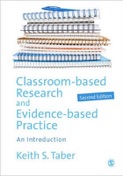Educational Research Methods

A site to support teaching and learning...

Interactive Whole Class Teaching In The National Literacy And Numercy Strategies
Qualitative data analysis examples: These short extracts from published research papers are provided to support class discussion.
Smith, F., Hardman, F., Wall, K., & Mroz, M. (2004). Interactive whole class teaching in the National Literacy and Numercy Strategies. British Educational Research Journal, 30(3), 395-411
Abstract
The study set out to investigate the impact of the official endorsement of ‘interactive whole class teaching’ on the interaction and discourse styles of primary teachers while teaching the National Literacy and Numeracy Strategies. In both strategies, interactive whole class teaching is seen as an ‘active teaching’ model promoting high quality dialogue and discussion between teachers and pupils. Pupils are expected to play an active part in discussion by asking questions, contributing ideas and explaining and demonstrating their thinking to the class. Using computerized systematic classroom observation, discourse analysis of transcripts and a questionnaire, the project looked specifically at the discourse strategies currently used by a national sample of primary teachers when teaching the literacy and numeracy strategies and their perceptions of current practices. The findings suggest that traditional patterns of whole class interaction have not been dramatically transformed by the strategies. The implications of the findings for classroom pedagogy, teachers’ professional development and future research priorities are considered.
"A national sample of 72 primary school teachers working in a range of socio-economic settings across the regions of England was selected (35 literacy, 37 numeracy). Within each subject area (literacy and numeracy) half the teachers were selected because they were highly effective: the other half made average progress with their pupils. The effectiveness of each teacher was established using value-added data (residual measures) based on Performance Indicators in Primary Schools (PIPS) data provided by the Curriculum, Evaluation and Management (CEM) Centre at Durham University (Tymms, 1999). Structuring the sample in this way allowed for an investigation into whether effective teachers are employing a different range of discourse strategies in comparison with the ‘average’ teachers (i.e. those whose value-added scores are broadly zero). Systematic sampling (a form of probability sampling) was used to select teachers from within our larger sample of effective and average teachers (i.e. selecting every nth case)." p.397
Transcript analysis
"Video recording of a sub-sample of 14 effective teachers identified by the value-added data were collected. The sample was made up of 8 Reception/KS1 teachers (4 literacy/4 numeracy) and 6 KS2 teachers (3 literacy/3 numeracy). The video recordings were transcribed and coded using an intensive system of discourse analysis adapted from the work of Sinclair and Coulthard (1975). The teaching exchanges were quantified and turned into percentage scores to compare the patterning of the teacher/pupil interactions across all 14 lessons. By focusing on the three-part, IRF structure, the findings of the discourse analysis could be triangulated with the computerized observation data. Teachers’ questions were also analysed according to whether they were open or closed and for the use of probe and uptake questions by the teacher. The average length of pupil utterances was also calculated.” p.398
(Brief extracts such as these can only give you a flavour of a study. You can use the citations to access the full papers to explore the extracts here in the contexts of the full studies.)
This is a personal site of Keith S. Taber to support teaching of educational research methods.
(Dr Keith Taber is Professor of Science Education at the University of Cambridge.)
2016
